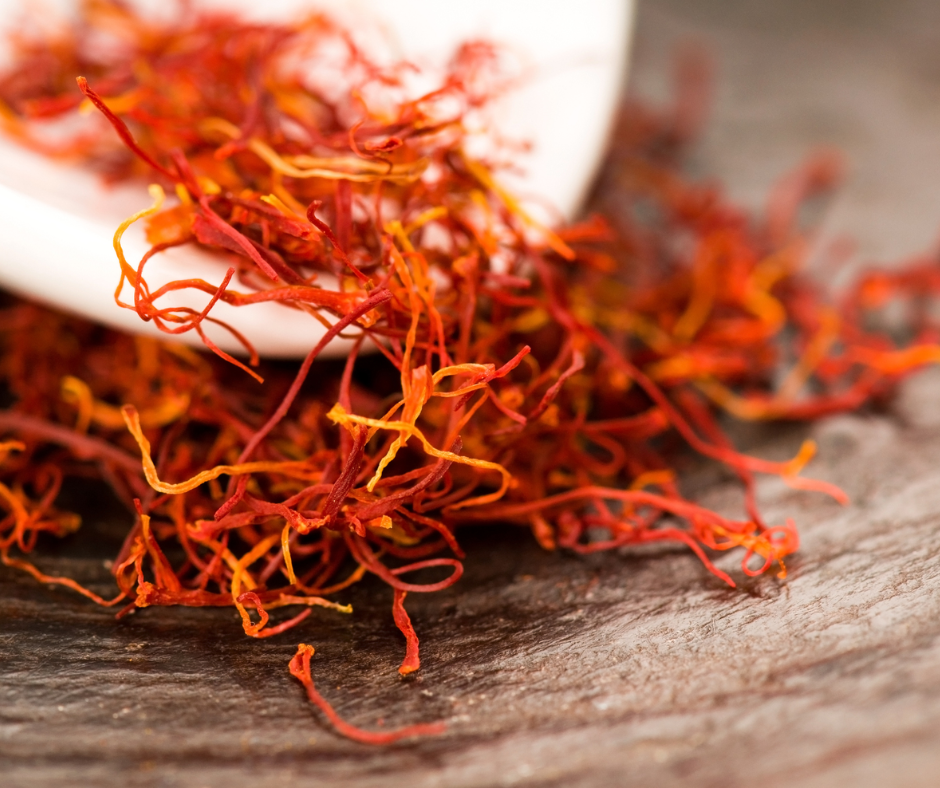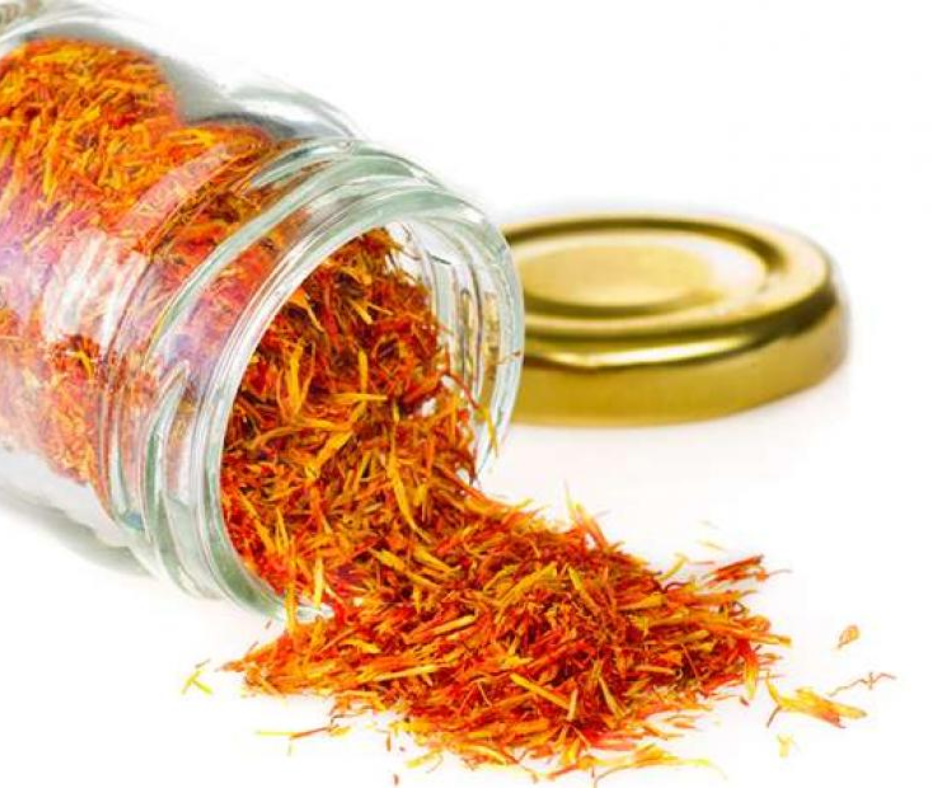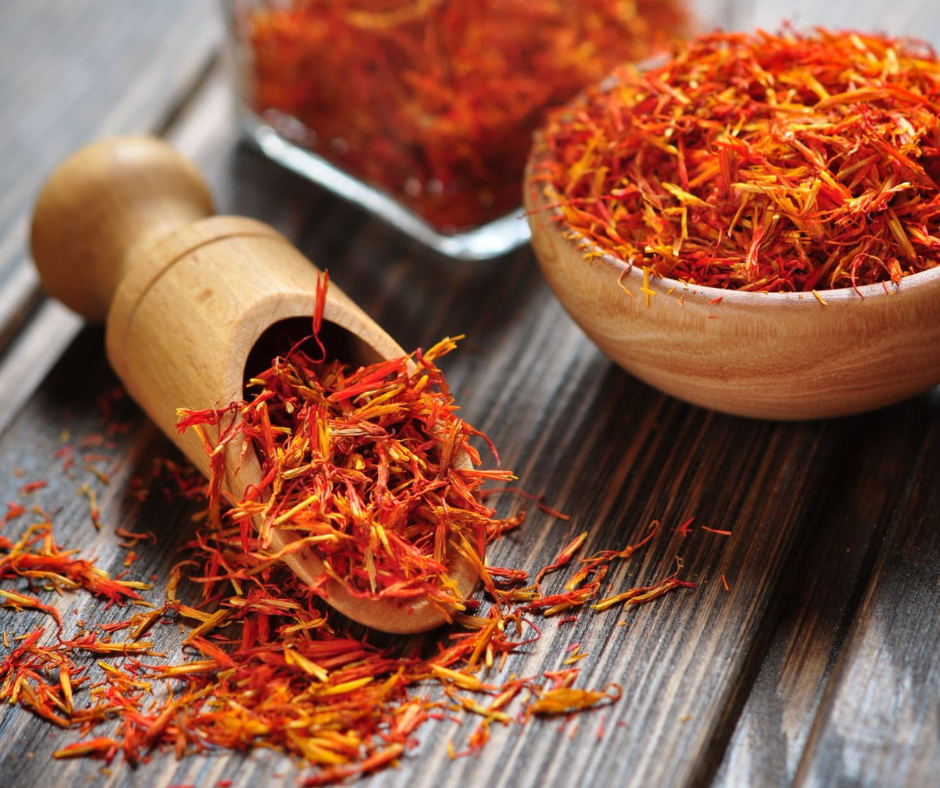Introduction To The Exquisite Spice
Introduction To Saffron And Its Significance In The Culinary World
Saffron is a highly sought-after spice known for its unique flavor, vibrant color, and luxurious reputation. Derived from the Crocus sativus flower’s delicate threads, saffron has been used in cooking for centuries. It is widely recognized as one of the most expensive spices in the world due to the labor-intensive process of hand-picking the delicate threads. But What Does Saffron Taste Like?
In the culinary world, saffron is revered for its ability to infuse dishes with a distinct taste and aroma. Its flavor profile is warm, floral, and slightly bitter, with subtle earthy notes. The complexity of saffron’s flavor sets it apart, making it an essential ingredient in various cuisines, particularly Mediterranean, Middle Eastern, and Indian dishes.
The intense flavor and aroma of saffron make it versatile and suitable for both sweet and savory recipes. It enhances the taste of rice dishes, soups, stews, and sauces, adding elegance to desserts like cakes, ice cream, and pastries. Saffron is often used sparingly, as its potent flavor can easily overpower other ingredients, so a little goes a long way.

The History And Origin Of Saffron
The history of saffron dates back thousands of years. It is believed to have originated in ancient Persia, modern-day Iran, and has been cultivated and revered in the region since antiquity. Saffron was highly valued in ancient civilizations, where it was appreciated for its culinary uses and medicinal and cosmetic purposes.
Cultivating saffron requires well-drained soil, ample sunshine, and a climate with hot summers and cool winters. This has led to regions like Iran, Spain, and Kashmir becoming renowned for their high-quality saffron production.
Throughout history, saffron has played a prominent role in various cultures and is an integral part of their traditions and cuisines. It has been traded along the Silk Road, mentioned in ancient texts such as the Bible, and featured prominently in the rituals and ceremonies of different cultures.
Today, saffron remains a symbol of luxury and refinement. Its distinct flavor and vibrant color make it a prized ingredient in traditional and modern gastronomy, appreciated by chefs and home cooks. The rich history and cultural significance of saffron add to its allure and make it a highly coveted spice among food enthusiasts worldwide.
In conclusion, saffron is a remarkable spice cherished for its exquisite flavor, vibrant color, and rich history. Its warm, floral taste and unique aroma have made it an essential ingredient in many traditional dishes. Whether used in savory or sweet recipes, saffron adds a touch of elegance and sophistication to culinary creations. Its origins rooted in ancient civilizations further enhance its appeal, making saffron a truly exceptional spice treasured by cultures across the globe.
What Does Saffron Taste Like?
The Intricate Taste Notes Of Saffron
Saffron, the highly sought-after spice, captivates culinary enthusiasts with its intricate taste profile. So, What Does Saffron Taste Like? The unique threads of the Crocus sativus flower infuse dishes with a warm, floral flavor accompanied by a subtle bitterness and delicate sweetness. These exquisite taste notes make saffron an indispensable ingredient in various cuisines across the globe.
When added to a dish, saffron releases a distinct aroma and imparts a complex flavor. The warm, floral notes create a sense of richness and depth, elevating the overall taste experience. The subtle bitterness is a counterbalance, adding a hint of complexity to the flavor profile. This delicate balance of flavors sets saffron apart from other spices.
Unveiling Saffron’s Delicate Sweetness And Subtle Bitterness
In addition to its warm, floral flavor, saffron carries a delicate sweetness. This subtle sweetness lingers on the palate, contrasting the other taste notes pleasantly. It adds a touch of elegance to both sweet and savory dishes, enhancing the flavor profile’s overall complexity.
The subtle bitterness of saffron adds depth and intensity to the taste experience. It provides a pleasing counterpoint to the sweetness and balances the overall flavor. This bitterness creates layers of flavor that unfold in the mouth, adding an element of intrigue to every bite.
It is important to note that saffron’s taste can easily overpower other ingredients if used excessively. Therefore, it is recommended to use saffron sparingly, allowing its unique flavor to shine without overwhelming the dish. A little saffron goes a long way, and it is best to add it gradually and taste as you go to achieve the desired flavor profile.
In conclusion, saffron’s taste profile is a harmonious blend of warm, floral notes, delicate sweetness, and subtle bitterness. Its intricate flavor adds depth, complexity, and elegance to dishes, making it a prized spice in culinary creations. Whether used in Mediterranean, Middle Eastern, or Indian cuisines, saffron never fails to leave a lasting impression. Its ability to impart sweetness and bitterness creates a balanced and unforgettable taste experience. So, the next time you embark on a culinary adventure, consider incorporating saffron to elevate your dishes to new heights of flavor.

The Sensory Experience Of Saffron
The Floral And Aromatic Qualities Of Saffron
Saffron, the highly coveted spice, offers a sensory experience. Its distinct floral and aromatic qualities can captivate even the most discerning palates. As you delve into the world of saffron, you will be enchanted by its intoxicating scent and visually mesmerized by the vibrant hue it imparts to your dishes.
The aroma of saffron is often described as warm, earthy, and slightly sweet. When you open a container of saffron, you are greeted with a fragrant bouquet that instantly transports you to exotic lands. It is this unique fragrance that sets saffron apart and makes it a prized ingredient in culinary creations around the world.
As saffron infuses into a dish, its floral notes become more pronounced. The delicate scent permeates the air, creating an alluring and inviting sensory experience. The aromatic qualities of saffron add a layer of complexity to the overall taste profile, enhancing the enjoyment of every bite.
Exploring Saffron’s Warm And Rich Flavor Profile
When it comes to flavor, saffron is a true revelation. Its warm and rich taste profile adds depth and complexity to any dish it graces. The flavor of saffron is multifaceted, with different taste notes working together harmoniously.
The primary flavor note of saffron is a distinct floral sweetness. This delicate sweetness lingers on the palate, creating a subtle and elegant contrast to the spice’s other taste elements. It adds a touch of sophistication to both sweet and savory dishes, elevating the overall culinary experience.
In addition to its floral sweetness, saffron carries a hint of bitterness that balances the flavor profile. This subtle bitterness adds a layer of complexity, enhancing the overall taste experience. It creates a pleasing counterpoint to the sweetness, preventing the flavor from becoming too cloying. The marriage of these contrasting taste notes creates a well-rounded and unforgettable flavor profile.
It is important to note that saffron’s flavor is potent and can easily overpower other ingredients if used excessively. To achieve the desired flavor profile, it is recommended to use saffron sparingly and gradually. This allows the unique taste of saffron to shine without overwhelming the dish.
In conclusion, saffron offers a sensory experience like no other spice. Its floral and aromatic qualities transport you to distant lands, while its warm and rich flavor profile adds depth and complexity to your culinary creations. Whether you are exploring Mediterranean, Middle Eastern, or Indian cuisines, saffron is a prized spice that will elevate your dishes to new heights of flavor. So, embark on a culinary adventure and let saffron unleash its magic in your kitchen.
Saffron’s Versatility In Culinary Creations
Enhancing Savory Dishes With Saffron’s Taste
One of the remarkable aspects of saffron is its ability to elevate savory dishes to new heights of flavor. Its warm and rich taste profile adds depth and complexity, making it a versatile ingredient in various cuisines.
When used in savory dishes, saffron infuses a delicate sweetness and a subtle floral note. It works particularly well with rice-based dishes such as paella or biryani, imparting a beautiful golden hue and a distinct taste that enhances the overall flavor profile. Saffron also complements seafood dishes, adding a unique twist to bouillabaisse or lobster bisque dishes. Its aromatic qualities enhance the seafood’s natural flavors, creating a delightful culinary experience.
Furthermore, saffron can add a touch of luxury to meat-based dishes. Whether it’s a saffron-infused sauce for chicken or a hearty lamb tagine embellished with spice, saffron brings sophistication and depth that tantalizes the taste buds.
Sweet Indulgence: Incorporating Saffron Into Desserts
Saffron’s versatility extends beyond savory dishes and flourishes in desserts. Its unique flavor profile adds a surprising and luxurious element to sweet treats, making them unforgettable.
Saffron pairs beautifully with honey, almonds, and pistachios, creating divine desserts such as saffron-infused ice cream or saffron-flavored baklava. The subtle floral sweetness of saffron harmonizes perfectly with the creamy texture of desserts like panna cotta or rice pudding, resulting in a delightful fusion of flavors.
In traditional Indian and Persian cuisine, saffron is often used to add a vibrant hue and a burst of flavor to festive sweets like saffron-infused milk sweets or saffron-flavored syrup-soaked pastries. These desserts appeal to the eyes and enchant the palate with their rich and aromatic saffron notes.
To fully utilize saffron’s potential in desserts, it is important to use it sparingly and allow its unique taste to shine without overpowering other ingredients. A little goes a long way, and by carefully measuring and incorporating saffron, you can create delectable desserts that leave a lasting impression.
In summary, saffron’s versatility in culinary creations is truly remarkable. Whether enhancing the flavors of savory dishes or adding an indulgent touch to desserts, saffron’s warm and rich taste profile adds depth and complexity to every bite. Its ability to create a sensory experience makes it a prized spice in kitchens worldwide. So, embrace saffron’s magic and let your culinary creations transcend ordinary flavors.

Mastery Of Saffron Usage: Achieving Perfect Flavor Balance
Tips And Techniques For Using Saffron In Cooking
Saffron, the exquisite spice known for its vibrant color and distinct flavor, can elevate any dish. However, saffron requires skill and finesse to achieve the perfect flavor balance. Here are some tips and techniques for mastering the usage of saffron in your culinary creations.
- Infusion: Saffron threads must be infused in liquid before releasing their flavor and color. This can be done by steeping the threads in warm water, broth, or milk for at least 10-20 minutes. The longer you steep, the stronger the flavor and color will be.
- Grinding: To enhance the flavor, you can grind saffron threads into a powder using a mortar and pestle. This helps to distribute the flavor more evenly throughout the dish.
- Quantity: Saffron is a potent spice, and a little goes a long way. Generally, a small pinch (about 10-15 threads) is enough to flavor a dish serving four people. It is important not to overpower the dish with too much saffron, as it can become overpowering and bitter.
- Timing: Add saffron towards the end of the cooking process for the best results. This allows the flavors to develop without being compromised by heat. Avoid boiling saffron, as excessive heat can diminish its delicate taste.
- Storage: Saffron is sensitive to light and moisture, so it should be stored in an airtight container in a cool, dark place. Proper storage ensures that saffron retains its flavor and aroma for longer.
Pairing Saffron With Complementary Flavors
When using saffron in your culinary creations, it is important to pair it with complementary flavors that enhance its unique taste. Here are some popular combinations that bring out the best in saffron:
- Citrus: Saffron’s warm and floral notes are beautifully complemented by the bright acidity of citrus fruits like lemon, orange, and lime. The zesty tang of citrus balances the richness of saffron, resulting in a harmonious flavor combination.
- Nuts: Saffron pairs exceptionally well with nuts like almonds and pistachios. The creamy and earthy flavors of nuts provide a textural contrast to saffron’s delicate sweetness, creating a delightful taste experience.
- Herbs and Spices: Saffron blends seamlessly with herbs and spices, such as thyme, rosemary, cinnamon, and cardamom. These additions enhance the complex flavor profile of saffron and add depth to your dishes.
- Rice and Pasta: Saffron is often used to flavor rice-based dishes like paella and biryani. Its warm golden hue infuses the grains with a subtle taste that elevates the overall dish. Similarly, saffron can be added to pasta sauces, creating a luxurious and aromatic experience.
- Dairy: Saffron pairs beautifully with dairy products like milk, cream, and yogurt. The creamy and luscious texture of dairy complements saffron’s delicate floral notes, resulting in indulgent desserts or creamy sauces.
By understanding the tips and techniques for using saffron and exploring its potential flavor combinations, you can master the art of incorporating this exquisite spice into your cooking. Whether enhancing savory dishes or creating decadent desserts, saffron’s warm and rich taste profile will add depth and complexity to your culinary creations. So, embrace saffron’s magic and let your dishes transcend ordinary flavors.
Conclusion
Now you should know ‘What Does Saffron Taste Like?’. Saffron, the exquisite spice known for its vibrant color and distinct flavor, adds a touch of magic to any dish it graces. By mastering the usage of saffron, you can achieve the perfect flavor balance and elevate your culinary creations to new heights.
The Exclusivity Of Saffron’s Taste And Flavor Characteristics
The taste of saffron is truly unique and cannot be replicated. It has a delicate floral aroma and a warm, earthy, and slightly sweet flavor profile. The flavor is subtle yet distinct, leaving a lingering and luxurious aftertaste. The exclusivity of saffron’s taste lies in its rarity and the meticulous process of harvesting the delicate stigma from the crocus flower.
Expanding Culinary Horizons With Saffron’s Diverse Applications
Saffron’s versatility in the kitchen knows no bounds. It can be used in a wide range of savory and sweet dishes to enhance their flavors and aesthetics. In savory dishes, saffron lends its golden hue and delicate taste to rice-based dishes like paella and biryani, as well as soups, stews, and sauces. It harmonizes beautifully with seafood, poultry, and vegetables, adding depth and complexity to the overall flavor profile.
In the realm of desserts, saffron shines bright. It can transform a simple rice pudding into a luxurious treat, infuse richness into creamy ice creams and custards, and add an exotic twist to cakes, pastries, and cookies. When used in baking, saffron leaves a subtle yet unforgettable mark, making every bite a memorable experience.
Saffron’s diverse applications extend beyond the kitchen as well. It is used in traditional medicine and beauty products for its antioxidant and anti-inflammatory properties. Additionally, saffron-infused teas and beverages offer a soothing and aromatic experience that can be enjoyed both hot and cold.
In conclusion, saffron’s taste and flavor are true gems in the culinary world. Its exclusivity and distinctive characteristics make it a prized ingredient that adds depth and complexity to various dishes. By exploring its diverse applications and embracing saffron’s magic, you can unlock a world of flavors and create culinary masterpieces that delight the senses. So, let saffron be your culinary companion and elevate your dishes to extraordinary heights.
Graham Bartlett, owner at Taco and Piña Mexican food, is all about bringing the authentic flavors of Mexico to your plate. With Graham Bartlett, you can tantalize your taste buds with mouthwatering tacos and delicious piña coladas, all in one place. Stay connected and never miss a beat as Graham Bartlett takes you on a culinary journey through vibrant Mexican cuisine. Join the community and discover the perfect blend of flavor, culture, and passion that Graham Bartlett brings to the table. Experience the essence of Mexico, one bite at a time, with Graham Bartlett.
